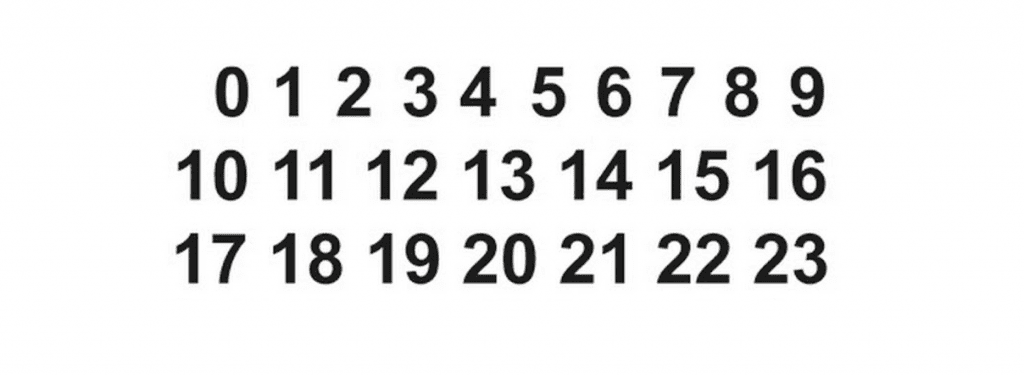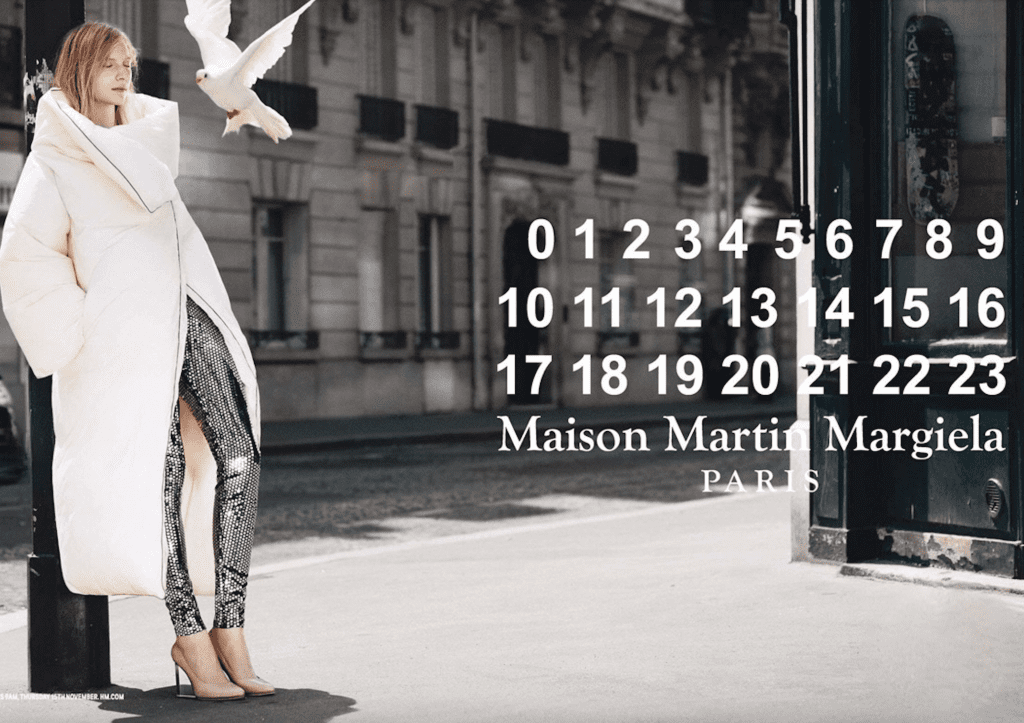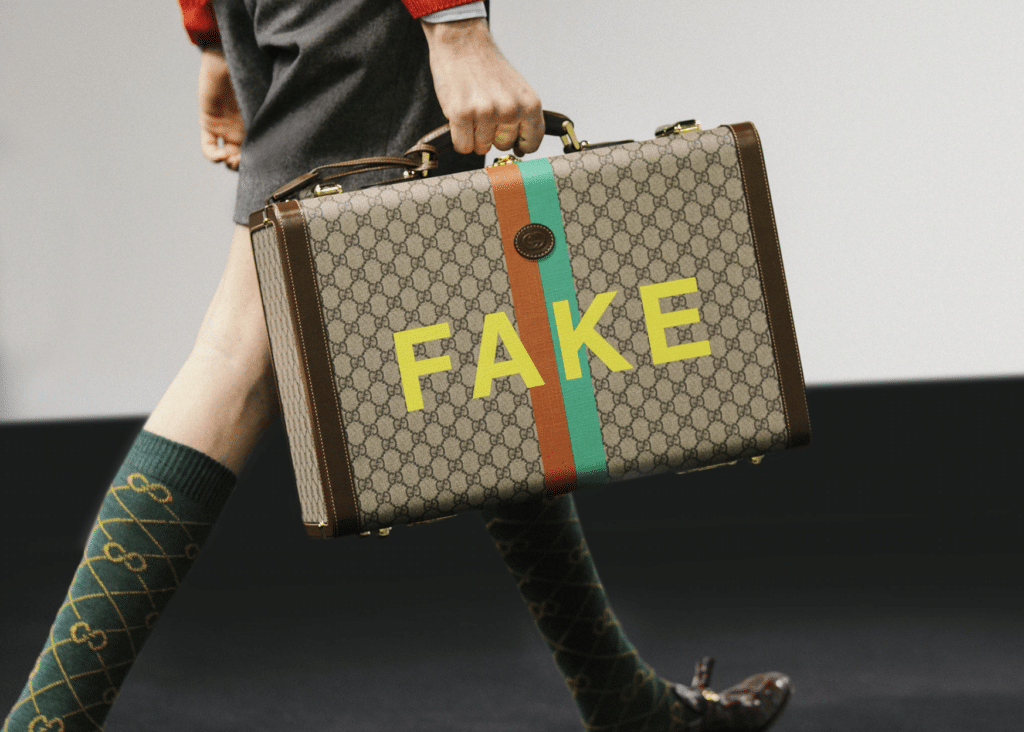An appeal board for the European Union Intellectual Property Office has rejected Maison Margiela’s bid to beat an earlier registration refusal for a trademark consisting of the slightly stylized placement of numbers 0-23. Despite being affixed to a wide array of Margiela wares (i.e., on the inside neck of shirts or the waistband of pants) and/or located on product tags from the brand (two examples of traditional trademark placements), an examiner for the European Union Intellectual Property Office determined that the mark lacks the necessary distinctiveness to function as a trademark when used in connection with candles, various homewares, and corresponding retail services (in Classes 3, 14, 18, and 35). Instead, the examiner found that consumers are more likely to view the mark as “a listing of the product/article number” or as akin to a barcode.
On the heels of being dealt a loss from the EUIPO in August 2022, Maison Margiela lodged an appeal with the EUIPO’s First Board of Appeal (R 1967/2022-1), arguing that its trademark boasts the necessary distinctiveness and that previous court decisions are on its side. Counsel for the Paris-based brand pointed to one previous case, in which the Court of Justice for the European Union held that the fact that a mark consists exclusively of numbers is, alone, not enough to prevent that mark from being registered. Beyond that, counsel for OTB Group-owned Margiela maintained that the mark at issue – which has been in use since the 1990s – has “no connection with the goods and services, since it is composed by all the numbers from 0 to 23, including 0, [which] cannot be connected to quantities of products or services.”
Moreover, the trademark is unlikely to be as a product/article number, per Margiela, since those are “generally short sequences of numbers, used by companies, internally or on the packaging, to replace the name of a precise article or to track items in stores.” The same is true for barcodes. As such, it will be viewed by consumers as “a figurative trademark composed [of] numbers … and not as a mere enumeration of numbers.” Still yet, Margiela argued (in response to an earlier assertion from the EUIPO examiner) that the fact that relevant consumers “are not used to seeing a long sequence of numbers” presented as trademarks is “not a reason to support the view that the mark here is not perceived as an indicator of source.” To the contrary,” Margiela claimed that such an argument “should [weigh] in favor of distinctiveness.”

In its May 2 decision denying Margiela’s appeal, as first reported by IPKat, the Board initially defined the relevant consumer, who is, in this case, either “an average consumer, who is well informed” or a “specialist with particular professional knowledge or experience in the field.” In terms of distinctiveness of the Margiela trademark, the Board held that it is “devoid of distinctive character” and thus, upheld the EUIPO examiner’s earlier refusal to register the mark in accordance with Article 7(1)(b) EUTMR.
A few key takeaways from the Board …
– “The relevant public will identify the sign applied for, in relation to the goods and services designated, as a sequence of numbers from 0 to 23, presented in a plain font, positioned on three separate lines one above the other. However, these characteristics … do not suffice to support the view that [the mark] has the minimum distinctive character necessary for registration as an EU trademark.”
– The Board agreed with the EUIPO examiner that the mark “will likely be perceived by the relevant public as a pre-printed tag/label to be affixed, for example, on the goods in Classes 4, 11 and 21 or on their packaging or, with particular regard to retail services, in Class 35, on an invoice, on a letter head or on a catalogue.”
– Despite Margiela’s claim that consumers are not used to seeing long sequences of numbers used as trademarks and that this weighs in favor of distinctiveness, the Board found that “relevant public is accustomed to seeing long series of numbers pre-printed on tags/labels on goods or on their packaging, corresponding, for example, to some internal code (e.g. article code, inventory number), for goods such those in Classes 4, 11and 21.” And the fact that this sequence “does not highlight any specific number does not make it distinctive for the goods and services covered by the application for registration.”
– In terms of the goods and services applied for, the Board stated that “there must be certain aspects of the signs at issue which may be easily and instantly memorized by the relevant public and which would make it possible for those signs to be perceived immediately as indications of the commercial origin.” And the mark at issue here “would not easily and instantly be recalled by the relevant public as a distinctive sign,” as it has “no characteristic element or any memorable eye-catching features likely to confer a minimum degree of distinctive character on the sign.”
TDLR: The Board rejected the application for the trademark for all of the goods and services claimed, driving home the point that a mark that the public is likely to perceive purely as a sequence(s) of numbers (as opposed to as a particular indication of origin) does not reach the level of distinctiveness required for registration.
THE BROADER VIEW: While the EUIPO and Board clearly find that the numbers 0-23, on their own, lack elements needed to enable consumers to view them as a trademark, they have provided an example of what is distinctive enough by way of at least one existing registration. A mark that has been deemed to be distinctiveness enough (under 7(1)(b) EUTMR) to be subject to registration (in Classes 3, 14, 18, and 25) is the same stylization of the numbers 0-23 – albeit with the important inclusion of the words Maison Margiela underneath the three lines of numbers. The EUIPO registered that mark back in 2015, and the U.S. Patent and Trademark Office (“USPTO”) registered it a year later based on that international registration.
The application at hand (sans the Maison Margiela language) appears to be an effort by the brand to broaden its rights in the mark to uses that do not include the Margiela name, an effort that has not been entirely unsuccessful. The USPTO, for example, registered the 0-23 mark (without the Margiela name) for use on candles (Class 4) and retail store services for fashion, accessories, etc. (Class 35) in early May 2023. And before that, it registered the sequence of numbers with a circle around the number 14 for use on men’s clothing, and the sequence of numbers with a circle around the number 11 for use on bags back in 2007.











